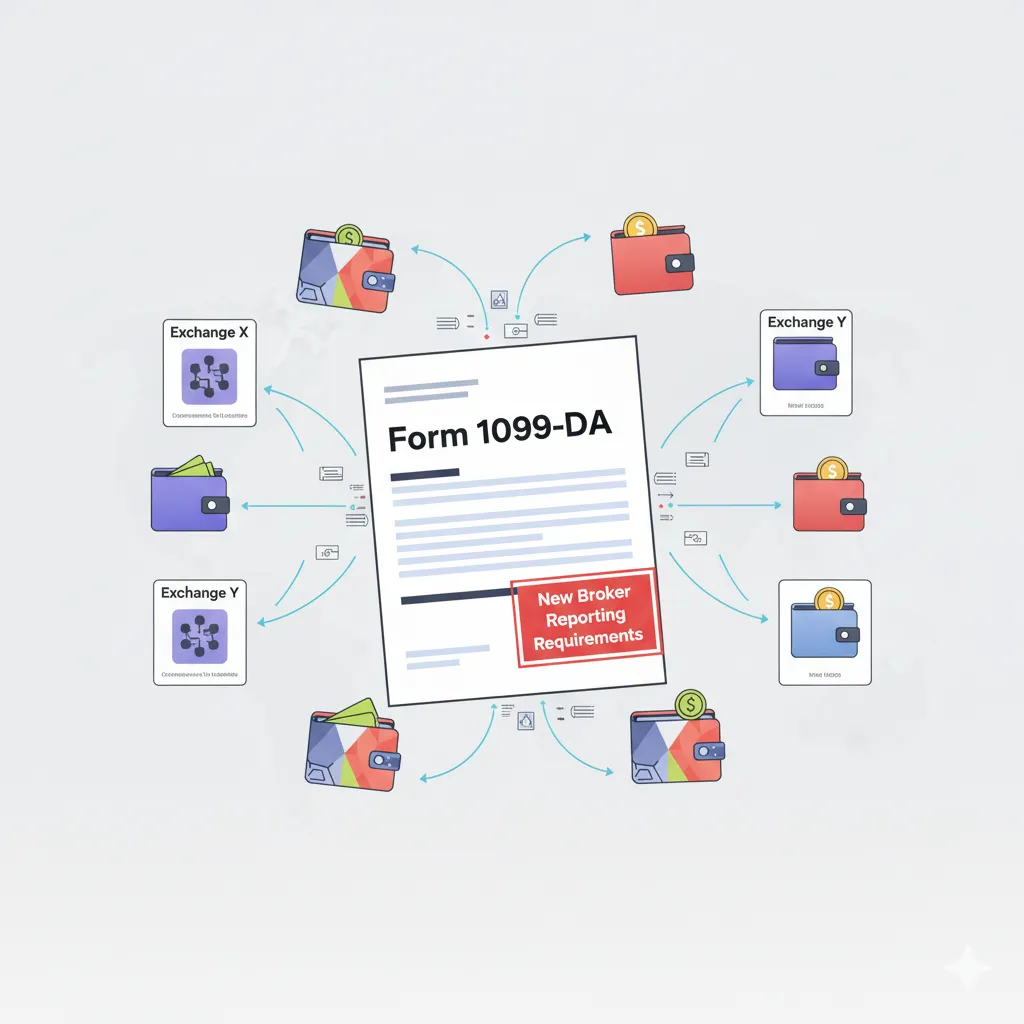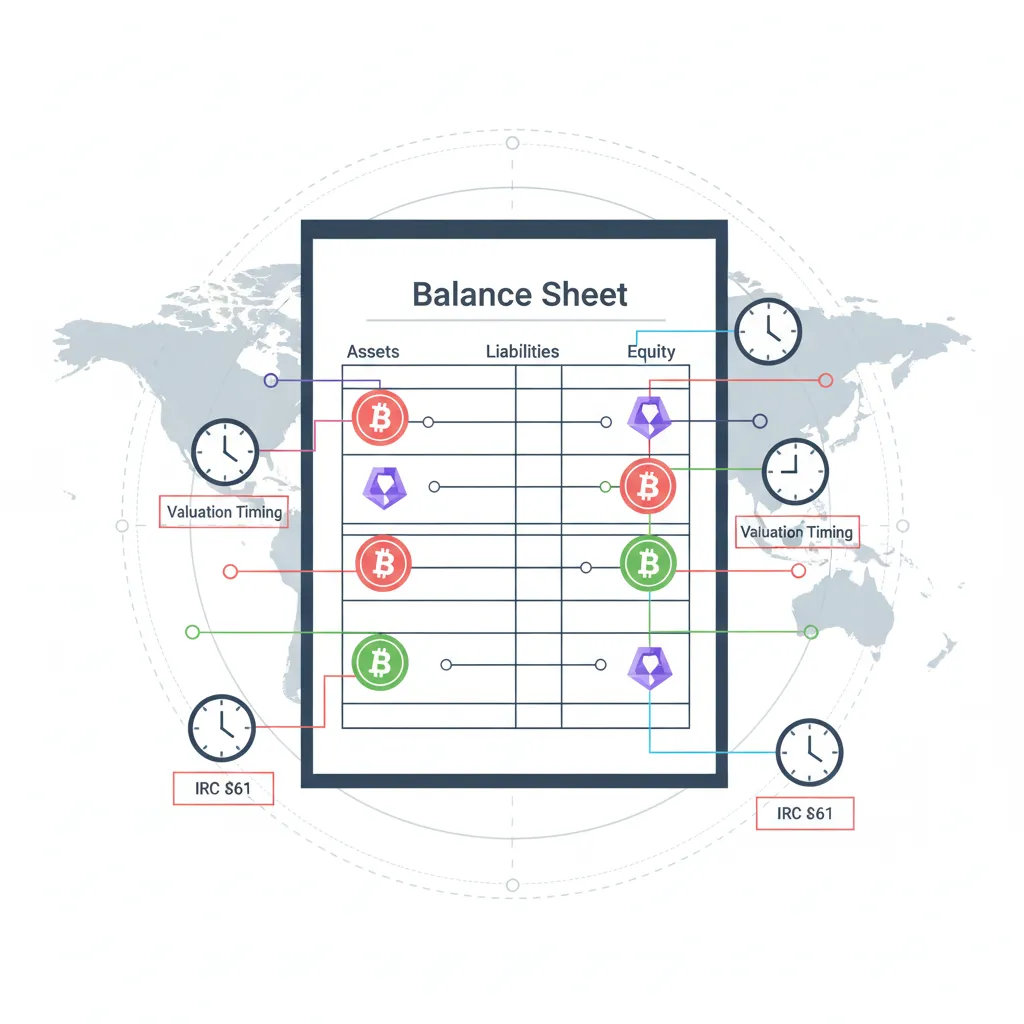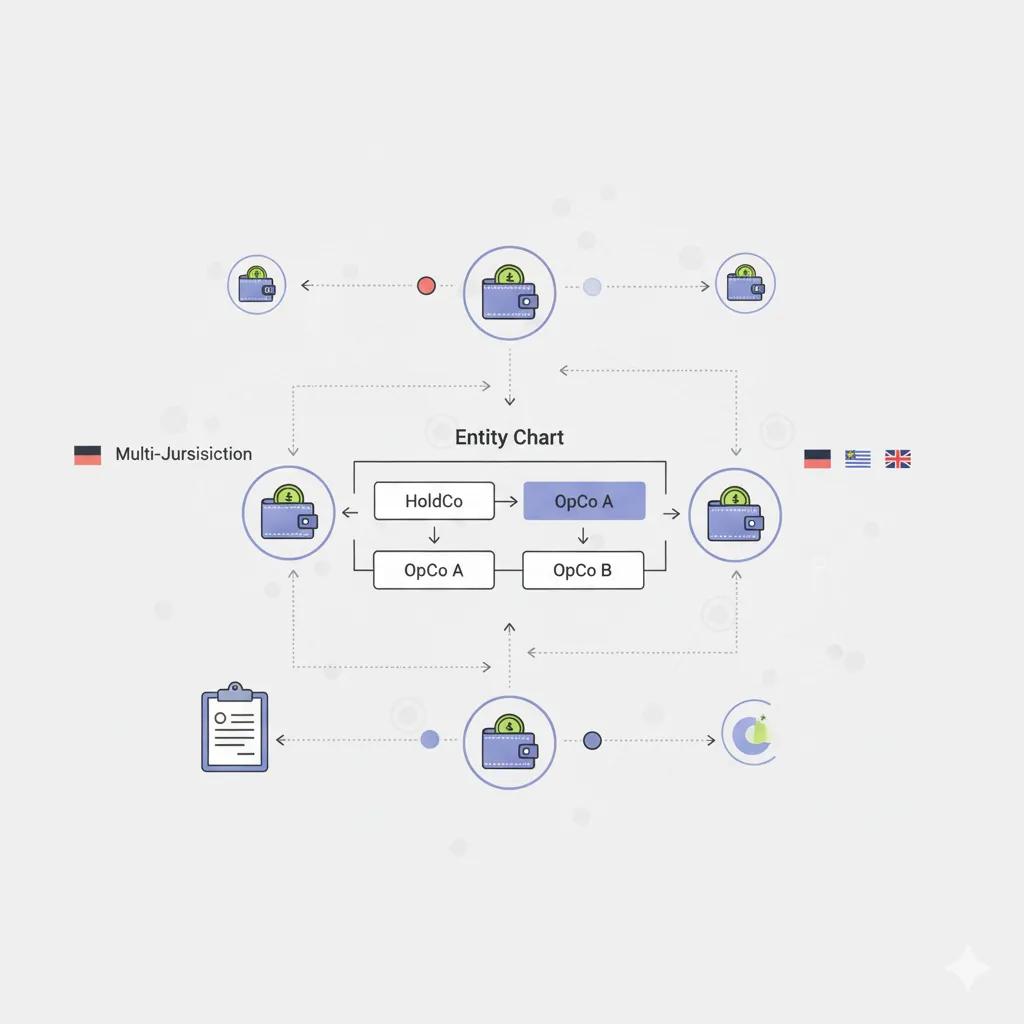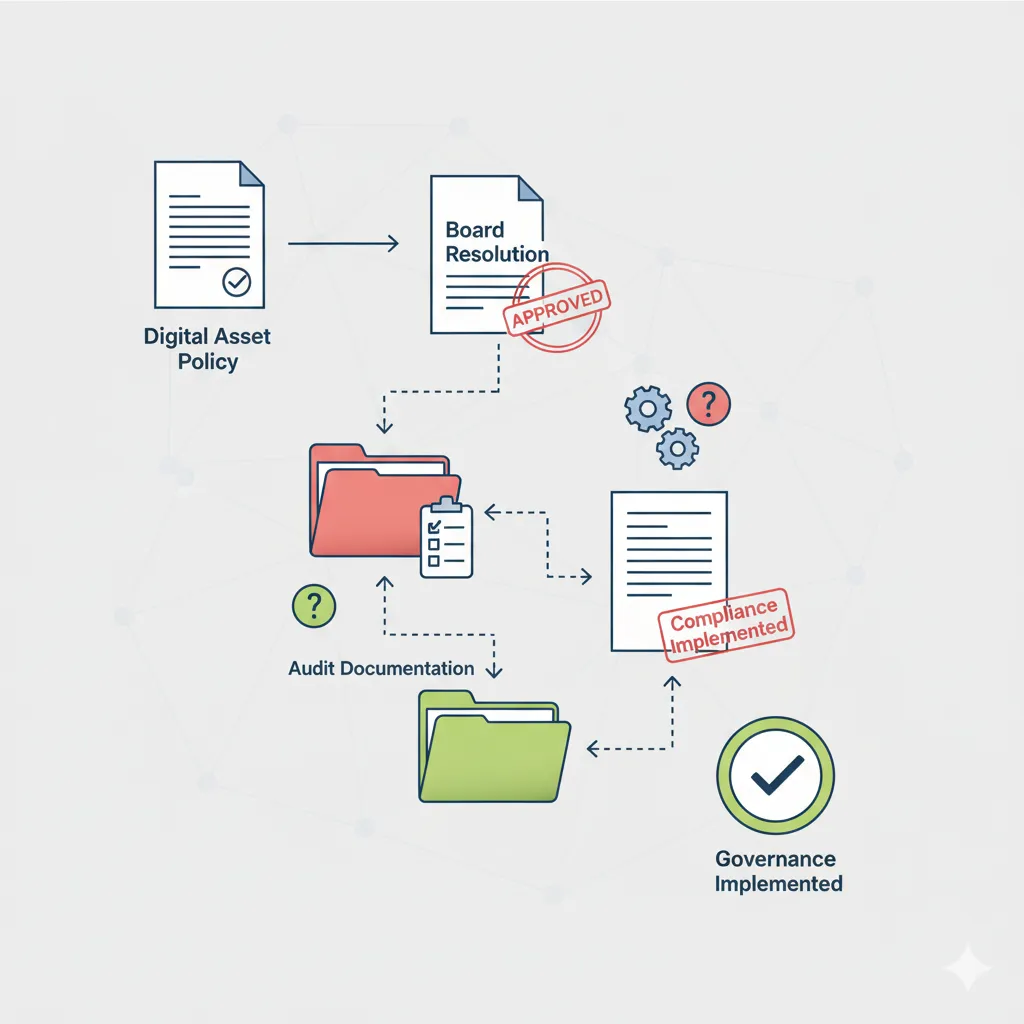Navigating the High-Stakes Decision That Determines Your Entire Crypto Tax Strategy
The classification of cryptocurrency activities as business operations versus investment holdings represents one of the most consequential tax decisions facing crypto founders today. With enhanced IRS enforcement capabilities through Form 1099-DA reporting and sophisticated blockchain analysis tools, this classification decision has never carried higher stakes or greater scrutiny.
The Stakes: Why Classification Matters More Than Ever
The classification of crypto activities fundamentally determines tax treatment with significant financial implications. Investment classification benefits include access to preferential capital gains rates (0%, 15%, or 20% for individual taxpayers), only 50% of capital gains included in taxable income for Canadian taxpayers, long-term capital gains treatment for assets held over one year, and capital losses can offset capital gains plus $3,000 of ordinary income annually.
Business classification benefits include full business expense deductions including office space, equipment, software, and professional services, business losses can offset unlimited amounts of ordinary income, self-employment income enables larger retirement plan contributions, and business classification supports institutional relationships and professional credibility.
Classification Comparison: Tax Implications
Legal Framework for Classification Analysis
Courts have developed sophisticated analytical frameworks for distinguishing investment from business activities, originally in the context of securities trading but now increasingly applied to cryptocurrency activities.
Leading Case Law Precedents
Groetzinger v. Commissioner (1987) established that being engaged in a trade or business requires regular and continuous activity, profit motive, and substantial time and effort devoted to the activity. Purvis v. Commissioner (1976) developed detailed factors for securities traders that courts now apply to crypto activities including frequency of transactions, dollar amount of transactions, time and effort devoted to trading, length of holding periods, and relationship to taxpayer's other income sources. Henderson v. Commissioner (2021) was the first major Tax Court case specifically addressing crypto trading classification, establishing that crypto activities are subject to the same analysis as securities trading.
Detailed Factor Analysis for Crypto Activities
Factor 1: Frequency and Regularity of Transactions
Business activity indicators include daily trading across multiple exchanges, systematic buying and selling patterns, use of algorithmic or automated trading systems, maintaining active positions across multiple digital assets, and responding to market movements with trading activity.
Investment activity indicators include periodic purchases for long-term holding, infrequent sales driven by specific financial needs, dollar-cost averaging strategies over extended periods, and focus on major cryptocurrencies (Bitcoin, Ethereum) rather than altcoin trading.
While no bright-line rules exist, courts have found the following patterns significant: high risk includes 1,000+ transactions annually, moderate risk encompasses 100-1,000 transactions annually, and lower risk involves less than 100 transactions annually focused on major cryptocurrencies.
Factor 2: Time and Effort Devoted to Activity
Business activity indicators include full-time or substantial part-time dedication to crypto activities, maintaining dedicated office space for trading, continuous market monitoring and analysis, professional education and training in crypto markets, and systematic record-keeping and analysis systems.
Investment activity indicators include limited time spent on crypto activities relative to other income sources, passive investment approach with minimal active management, reliance on general market research rather than detailed analysis, and integration of crypto investments into broader investment portfolio.
Documentation strategies should include maintaining detailed time logs for crypto-related activities, documenting investment research and decision-making processes, preserving correspondence with professional advisors, and recording educational activities and professional development.
Factor 3: Knowledge and Expertise
Business activity indicators include professional background in finance, technology, or related fields, advanced understanding of blockchain technology and crypto markets, use of sophisticated trading tools and analytical software, participation in professional crypto industry organizations, and speaking, writing, or consulting on crypto topics.
Investment activity indicators include general investment knowledge without specialized crypto expertise, reliance on mainstream financial media and basic research, use of simple buying strategies without complex analysis, and limited understanding of advanced crypto trading concepts.
Factor 4: Financial Resources and Financing Methods
Business activity indicators include use of borrowed funds or leverage for crypto trading, significant portion of net worth dedicated to crypto activities, professional business financing arrangements, and reinvestment of all gains into expanded trading activities.
Investment activity indicators include use of personal savings and investment funds, crypto holdings as part of diversified investment portfolio, conservative allocation percentages relative to total wealth, and regular distributions or withdrawals from crypto gains.
Strategic Planning for Investment Classification
Establishing and Maintaining Investment Intent
Crypto investors should develop written investment policies addressing long-term wealth building objectives, risk tolerance and asset allocation targets, rebalancing procedures and timelines, and exit strategies and distribution planning. Decision documentation should include written analysis for each major crypto purchase, long-term holding period intentions, integration with overall financial planning, and professional advisor consultation records.
Operational Strategies for Investment Treatment
A portfolio management approach should limit crypto activities to major, established cryptocurrencies, implement systematic buying programs (dollar-cost averaging), maintain holding periods exceeding one year when possible, and integrate crypto holdings with traditional investment accounts.
Professional relationship management involves working with registered investment advisors familiar with crypto, maintaining consistent investment approach across all assets, documenting advisory relationships and guidance received, and conducting regular portfolio reviews with professional advisors.
Strategic Planning for Business Classification
Establishing Legitimate Business Operations
Entity structure considerations include sole proprietorship (Schedule C) as the simplest structure for individual crypto traders with direct pass-through of gains and losses, access to business expense deductions, and self-employment tax on profits. Single-member LLC provides limited liability protection for crypto assets, tax flexibility with ability to elect corporate treatment, professional credibility for business relationships, and potential for easier expansion and partnership. S Corporation election offers potential self-employment tax savings on profits but includes complexity of payroll and employment taxes, limitation to U.S. individual owners, and restrictions on ownership structure.
Business Expense Optimization
Deductible business expenses for crypto trading include technology and equipment such as computer hardware and software for trading, multiple monitors and professional trading setups, cryptocurrency tax and portfolio management software, and high-speed internet and backup connectivity. Professional services encompass accounting and tax preparation services, legal counsel for compliance and structure, professional trading education and certification, and investment research and analytical services. Office and operational expenses include dedicated home office space if qualifying, professional liability and cyber security insurance, business phone and communication services, and travel to crypto conferences and educational events.
Risk Management in Classification Decisions
High-risk classification scenarios include inconsistent treatment across multiple tax years, large volume of transactions without clear business documentation, switching between business and investment treatment, and aggressive business expense claims without supporting documentation.
The IRS has enhanced enforcement capabilities including Form 1099-DA cross-referencing with tax return reporting, blockchain analysis software for transaction verification, sophisticated data analytics for pattern recognition, and coordination with state tax authorities and international partners.
Defensive strategies include consistent documentation by maintaining uniform classification approach across all years, documenting decision-making process and professional advice received, preserving all supporting records and communications, and regular review and updates of business procedures. Professional advisor relationships should involve working with tax professionals experienced in crypto classification, obtaining written opinions on classification decisions, conducting regular compliance reviews and updates, and maintaining proactive communication with advisors on classification issues.
Audit Risk Assessment Matrix
Advanced Planning Strategies
Bifurcated Classification Approach
Some sophisticated crypto participants successfully maintain both investment and business activities through careful segregation:
Segregation Strategy Framework
Multi-Entity Structures
International Considerations
Multi-Jurisdiction Issues
Common Classification Mistakes and How to Avoid Them
Inconsistent treatment involves switching between business and investment treatment based on tax outcomes, with the solution being to establish consistent approach based on factual analysis and maintain across all years. Inadequate documentation involves failing to document intent and operational procedures, solved by maintaining comprehensive written records of decision-making and operations. Mixing personal and business activities involves using same wallets and accounts for different types of crypto activities, solved by maintaining strict segregation between investment and business crypto holdings.
Conclusion
Classification of crypto activities as business or investment requires careful factual analysis, consistent implementation, and comprehensive documentation. Enhanced IRS enforcement makes this decision more critical than ever, with significant tax and audit implications. Founders must align tax strategy with genuine business or investment objectives while maintaining professional-grade documentation. Next step: Understand how international operations and CARF reporting requirements affect your crypto business structure and compliance obligations.

.svg)












